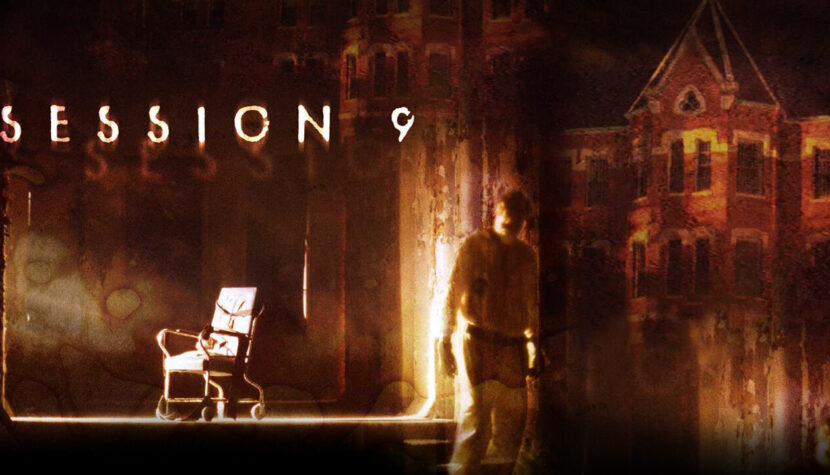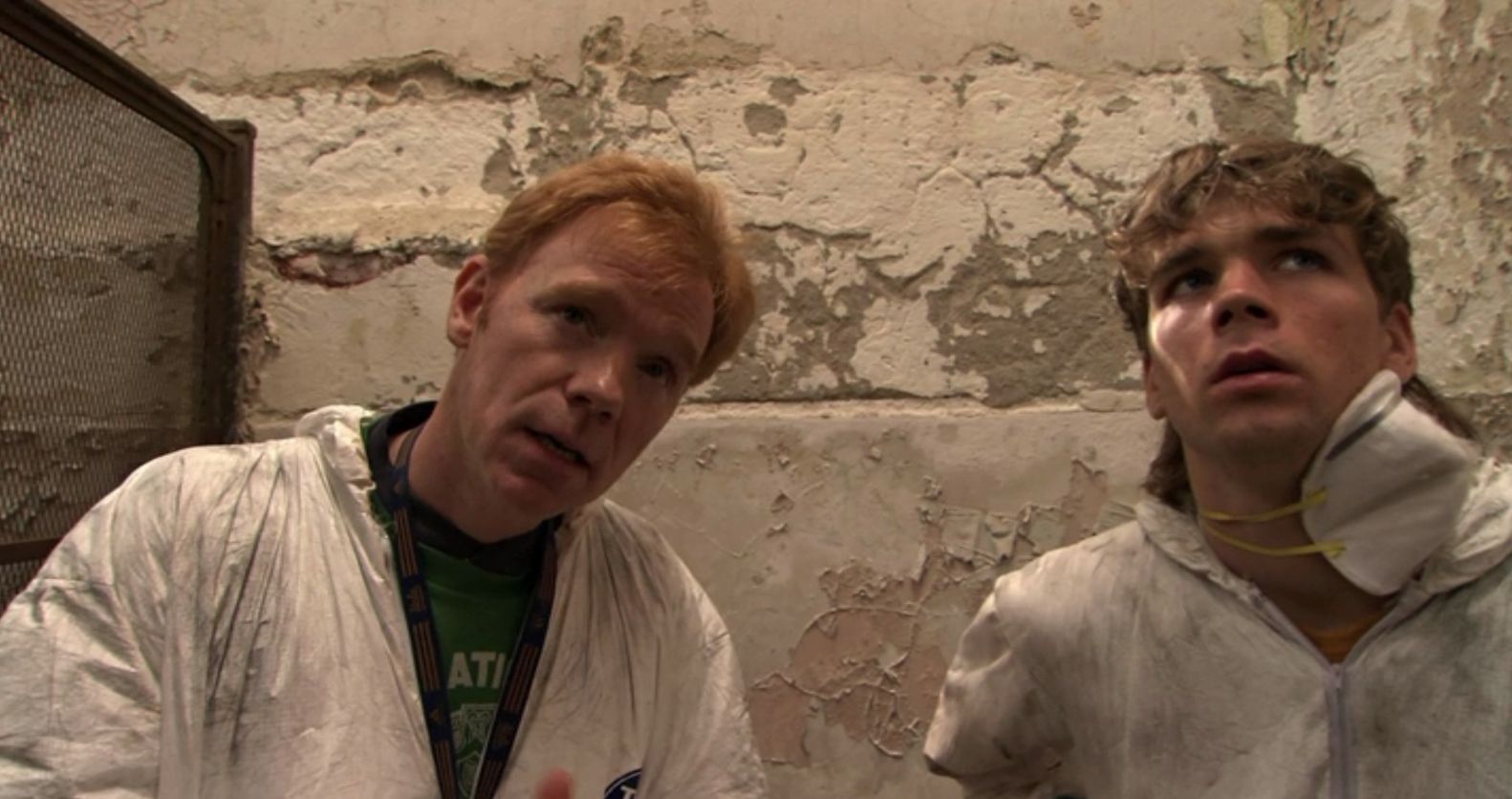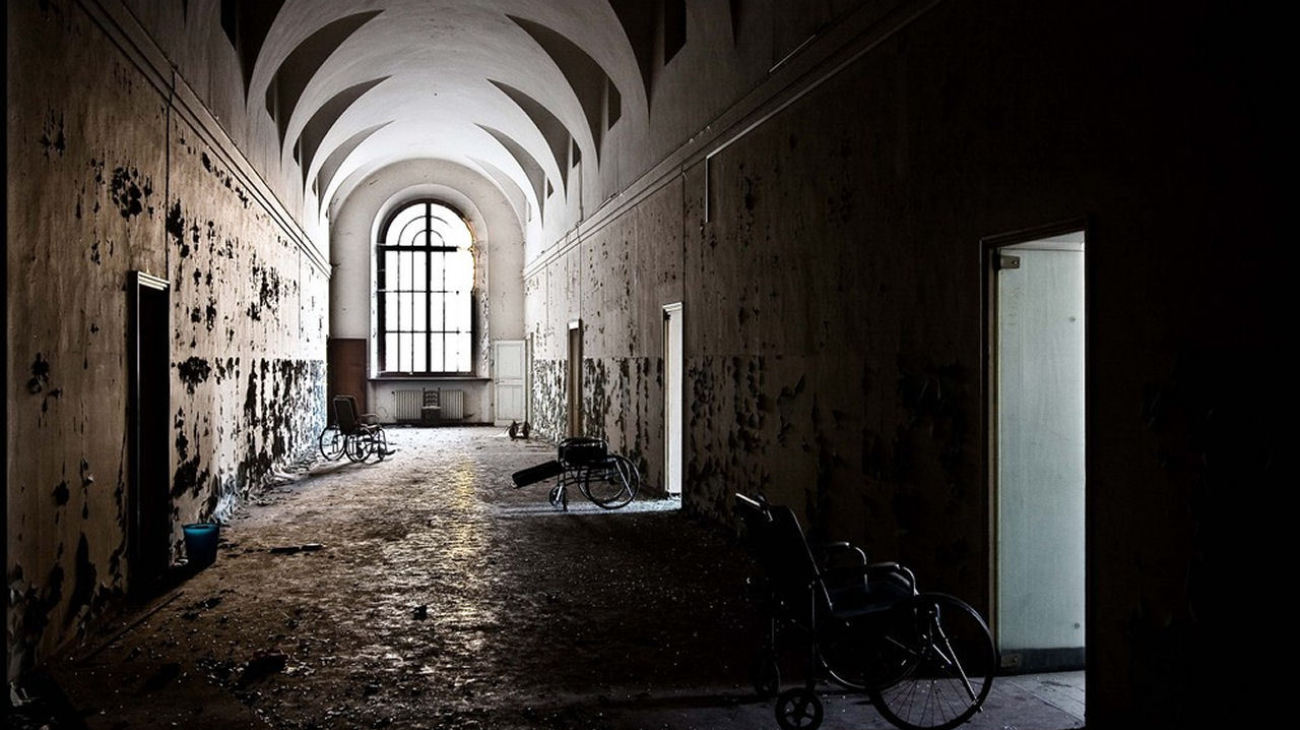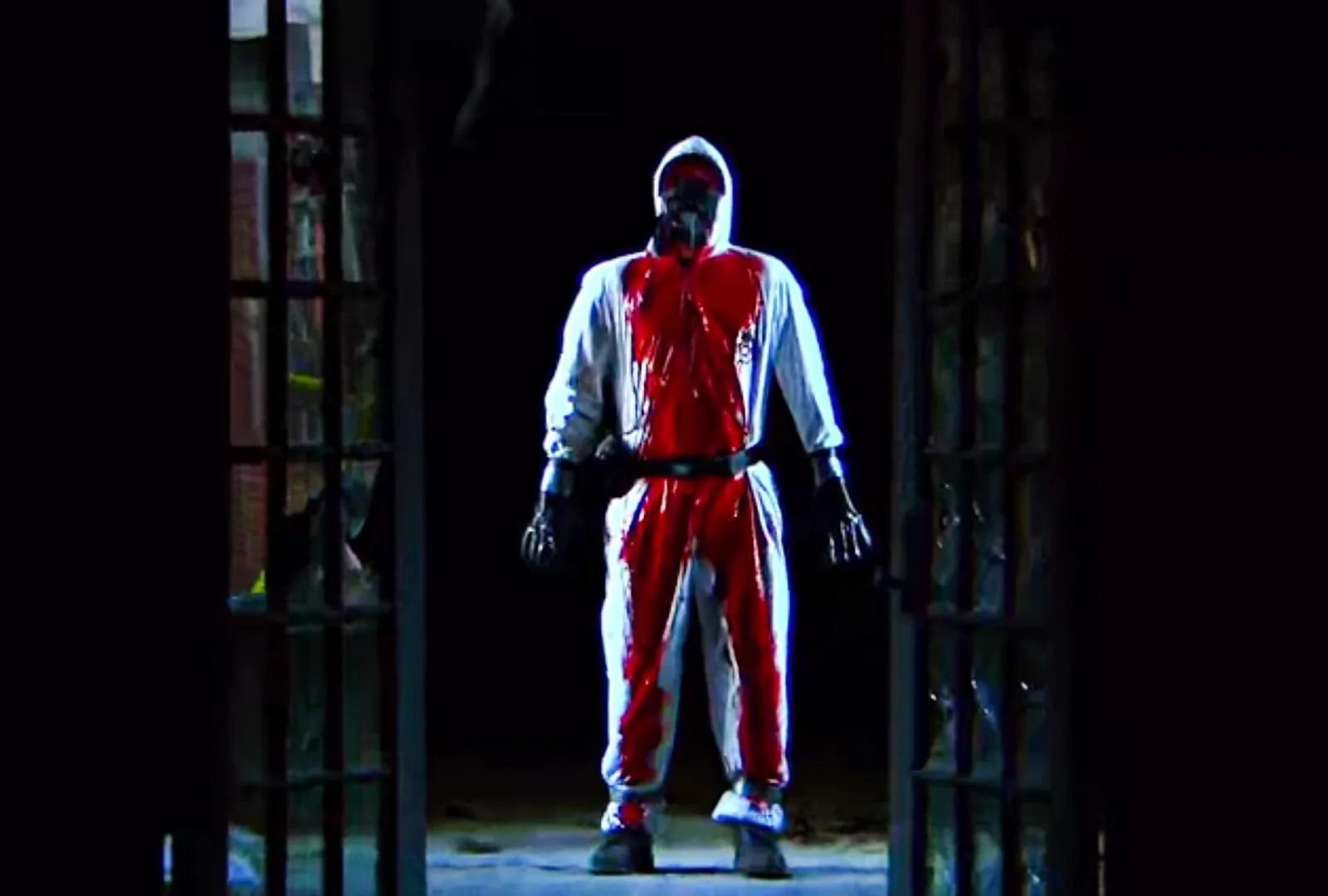SESSION 9. Terror in Brad Anderson’s mental asylum

In the opening minutes of Brad Anderson’s Session 9, there is a comparison made between the film’s setting, an old psychiatric hospital, and the body of a bat. Indeed, when we finally see the whole place from a bird’s-eye view, the main building and its wings resemble a flying creature. The vampire-like hint is clear, despite the fact that there are no actual bloodsuckers on the screen. What seems to drain the life force from the main characters is the enormous, long-abandoned hospital, whose atmosphere and history appear to overwhelm the team responsible for asbestos removal. While it is possible to get rid of the harmful substance, it is impossible to shield oneself from the fear, paranoia, and madness within the institution, which is all too familiar with these concepts. Anderson makes us witnesses to the nightmare that befalls five men, but he also aims to evoke a sense of bewilderment, uncertainty, and above all, a fear of the unknown in the viewer. He is so suggestive that his film is hard to forget.
The main characters of Session 9 have only a week to complete their job, which under normal circumstances would take twice as long. However, it becomes clear from the beginning that they won’t be able to accomplish the task, not so much because of the place’s bad reputation, but due to the tension within the group. As the days pass, the men’s weaknesses are revealed, and they quickly succumb to them. There’s Gordon (played by the excellent Peter Mullan), the company owner and a new father, dealing with a troublesome situation at home and the threat of his business closing; his trusted man and friend, Phil (David Caruso, before he joined CSI), whose former girlfriend is now dating another member of the crew, Hank (Josh Lucas), causing numerous conflicts between them; then there’s Mike (Stephen Gevedon, also a co-screenwriter of the film), once a promising lawyer who knows a surprising amount about the hospital’s history, and the youngest, Jeff (Brendan Sexton III), Gordon’s nephew who is still learning the trade. Anderson develops these characters, suggesting that the threat may not necessarily come from outside, especially when the characters, instead of working, start wandering through the abandoned hospital’s corridors searching for treasures or going through the files of former patients. Soon, when one of the workers goes missing, mutual accusations and distrust arise, and the increasing hopelessness takes a toll on the group’s behavior.

The director of Session 9 quickly sets the audience on edge, starting with the first shot of an old wheelchair on wheels placed in the center of a dilapidated corridor. However, this image is initially upside down and only turns 180 degrees after a moment. The sight itself can send shivers down one’s spine, but it’s the slow, steady, and relentless change in perspective that gives this moment its power and meaning. A moment in which everything remains still except for the perspective. Does this mean that the rest of the film will gradually shift from an upside-down perspective to the right one, culminating in a true image?
Significantly, Session 9 engages in a dialogue with Kubrick’s The Shining, referencing specific situations and themes from the famous horror movie. In the prologue, we are presented with a similar scene of exploring the building in which the characters will remain until the end of the film. Gordon’s wife is named Wendy, and their marriage is in crisis. The main theme is the encroaching madness, perhaps with the involvement of supernatural forces. In this aspect, Session 9 appears to take a different path, avoiding a straightforward assertion of whether the supernatural elements are actually present in the story.

On one hand, the director of Session 9 doesn’t hide the suggestion that the characters are slowly losing their minds, seeing and hearing things that likely don’t exist. On the other hand, it’s easy to believe that there might be something more left by the hospital’s former patients than just their files and tapes. When listening to the recordings of sessions with Mary Hobbes, viewers discover that the inhuman voice that greeted Gordon at the beginning of the film belongs to one of the personalities of a woman suffering from multiple personality disorder. However, the director doesn’t resolve what kind of evil lurks within the walls of the infamous institution—whether it’s a haunted building, the possession of one or more individuals, a psychological disorder, or a being that, as it describes itself, dwells in the weak and wounded. Can we even speak of a being when it’s merely a fragment of someone’s mind?

Anderson would later direct The Machinist (2004), in which Christian Bale, looking frighteningly emaciated and sleep-deprived, can’t distinguish between reality and his own hallucinations, and Stonehearst Asylum (2014), based on Edgar Allan Poe’s story, where the inmates take the place of the doctors and vice versa. In all three of these films, the boundary between normalcy and madness blurs, but only in Session 9 does Anderson leave no hope that once that line is crossed, a return to a previous state is possible. He underscores this pessimistic proposition with scenes and images that burrow deep under the viewer’s skin, often with a metaphorical meaning, such as the mentioned first shot or the panic-inducing run through the underground corridor, where the lights gradually go out one by one. Thanks to HDCAM tape recording, Uta Briesewitz’s cinematography has a specific look and texture with a documentary-like quality, adding realism and simultaneously reducing the distance between the audience and the characters. The music by the Climax Golden Twins is exhausting, monotonous, and yet perfect for this journey into a diseased or possessed mind.

From a certain point on, however, the script abandons logic and becomes more interested in confusing the audience, making an effort to surprise us in a self-referential way. It builds tension, accelerates the pace, and makes the narrative more engaging, but at the cost of the coherent portrayal of deepening psychosis. While the final outcome can be only one, and the final twist shouldn’t be a surprise to anyone, Session 9 strikes with the relentlessness of its tragic conclusion. The director, however, never reveals whether he sees the malevolent force in the characters’ madness, leaving the interpretation to the viewer.

